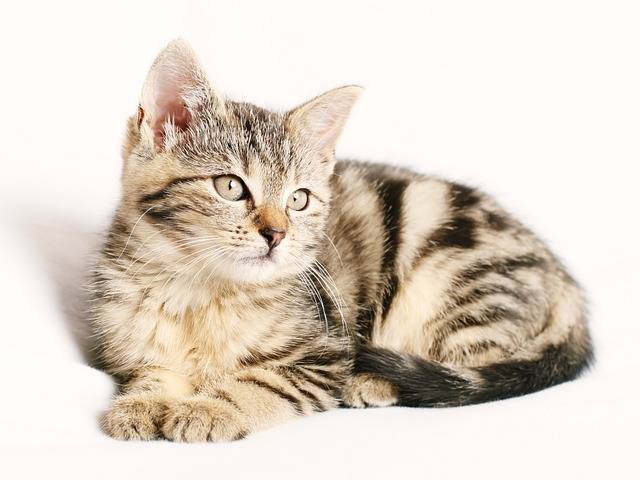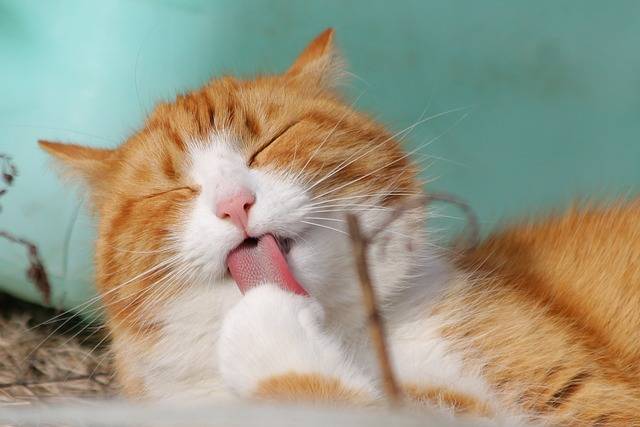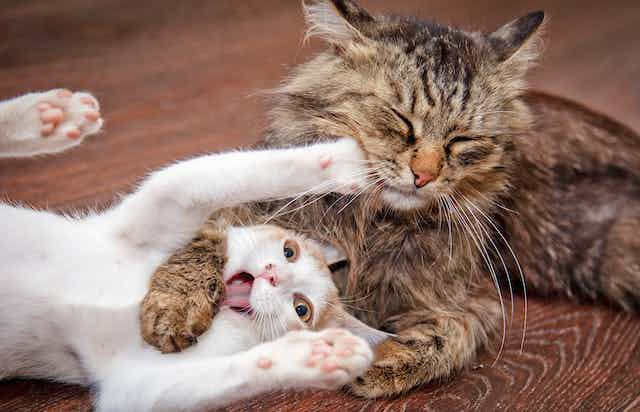cats
Mastering Cat Behavior: The Ultimate Guide to Stress-Free Nail Trimming

Mastering Cat Behavior: The Ultimate Guide to Stress-Free Nail Trimming
Are you tired of the struggle and stress that comes with trimming your cat’s nails? If so, you’re in luck! This guide is here to help you conquer the task of nail trimming in a stress-free way. Understanding your cat’s behavior is key to successful nail trimming, and this guide will provide you with the information you need.
Regular nail trimming is important for your cat’s health, and with the right tools and techniques, you can turn it into a calm and enjoyable experience for both you and your feline companion. No more scratched furniture and hello to stress-free nail trims!
Get ready to become an expert in cat behavior and achieve perfect paws with this comprehensive guide.
Key Takeaways
Mastering Cat Behavior: Tips for Easy Nail Trimming
Taking care of your cat’s nails is essential for their well-being. Regular nail trimming not only prevents discomfort but also reduces the risk of injuries. However, it can be challenging if your cat is not cooperative. With the right approach and patience, you can make the process easier for both you and your feline companion.
Start by using the appropriate tools for nail trimming, such as cat nail clippers or a grinder. Introduce these tools to your cat gradually, allowing them to sniff and explore. This will help them become familiar and comfortable with the equipment.

Find a quiet and calm environment where you can both relax when it’s time to trim your cat’s nails. Gently hold your cat’s paw and extend the claws by applying gentle pressure to the pad. Be careful not to squeeze too tightly or cause any discomfort.
Trim only the sharp tips of the nails, avoiding the sensitive area containing blood vessels called the quick. If your cat has clear or light-colored nails, you can easily see the quick and avoid cutting too close. For cats with dark-colored nails, take extra caution and trim small amounts at a time to prevent accidentally cutting the quick.
Remember, practice makes perfect. If your cat becomes anxious or stressed during the process, take breaks and reward them with treats or praise. Gradually increase the trimming sessions over time to help your cat become more comfortable with the process.
By understanding cat behavior and providing stress-free nail trimming, you can ensure a happier and healthier cat. So take the time to learn and implement these tips, and soon you’ll be able to trim your cat’s nails with ease, leaving them content and purring with satisfaction.
Quote: "Nail trimming doesn’t have to be a stressful experience for you or your cat. By following these tips, you can create a positive and comfortable environment for both of you."
Understanding Your Cat’s Behavior
Understanding Your Cat’s Behavior

To understand your cat’s behavior, pay close attention to their body language and vocalizations. Cat body language can provide valuable insights into their mood and emotions. Observe their tail position, ear position, and overall posture. A relaxed and content cat will have a loose, relaxed tail, ears facing forward, and a calm posture. On the other hand, signs of stress may include a puffed-up tail, flattened ears, and a tense or crouched body. Vocalizations such as meowing, purring, or hissing can also give you clues about how your cat is feeling.
By understanding your cat’s body language and vocalizations, you can better respond to their needs and create a stress-free environment for them. This understanding is especially important when it comes to the regular nail trimming of your cat. It helps minimize any potential stress or discomfort they may experience during the process.
Importance of Regular Nail Trimming
The regular trimming of your cat’s nails is crucial for maintaining their overall health and well-being. Neglecting their nails can lead to various issues, including overgrowth, discomfort, and potential injury. Here are three reasons why regular nail trimming is important for your cat:
- Nail health: Trimming your cat’s nails helps keep them in good condition by preventing excessive length and brittleness. When nails become overgrown, they can curl and dig into your cat’s paw pads, causing pain and discomfort.
- Injury prevention: Cats with long nails are more prone to getting their nails caught in things or accidentally scratching themselves. By trimming their nails regularly, you can reduce the risk of injury, such as broken or torn nails.
- Protecting your furniture and skin: Regular nail trimming helps prevent your cat from scratching your furniture and unintentionally scratching you during play or affectionate gestures.
Tools for Stress-Free Trimming
Stress-free trimming tools are important to ensure a comfortable and successful nail trimming experience for your cat. One popular tool is a cat nail clipper, specifically designed with sharp, curved blades to easily and safely trim your cat’s nails.
Another option is a nail grinder, which uses a rotating emery board to gradually file down the nails, providing a smoother finish.
Additionally, alternative nail care techniques such as scratchers, scratching posts, and nail caps can help maintain your cat’s nails and reduce the need for frequent trimming.
These tools and techniques are designed to minimize stress and discomfort for your cat, allowing for a hassle-free nail trimming experience.

Preparing Your Cat for Nail Trimming
Preparing Your Cat for Nail Trimming
To help your cat feel more comfortable with nail trimming, it’s important to gradually introduce the process and use positive reinforcement techniques. This will reduce their anxiety and make the experience enjoyable for both of you.
Here are three steps you can take to prepare your cat for nail trimming:
- Start by gently handling your cat’s paws and touching their nails without actually trimming them. Use treats and praise to create positive associations with the process.
- Slowly introduce the nail clippers or trimmers by letting your cat sniff and investigate them. Reward them for staying calm during this introduction.
- Practice short sessions of simulated nail trims using a fake nail or a pencil to mimic the sensation. Reward your cat for cooperating and remaining calm during these practice sessions.
Techniques for Stress-Free Trimming
Achieving stress-free nail trimming for your cat involves using proper techniques and handling their paws with care.
If your cat is anxious or resistant to nail trimming, there are alternative methods you can try. One option is to provide a scratching post or cat tree for them to naturally file down their nails. Another alternative is using nail caps, which are soft covers that can be placed over their claws to prevent scratching.
When handling an anxious cat, it’s important to create a calm and quiet environment. Speak softly and reassuringly, and offer treats or rewards throughout the process. Take breaks if needed and never force your cat to continue if they’re showing signs of distress.
Frequently Asked Questions
How Often Should I Trim My Cat’s Nails?
How often should you trim your cat’s nails? Regular nail trimming is important to ensure your cat’s comfort. By trimming their nails, you can prevent any discomfort or pain caused by overgrown nails. But how do you trim a cat’s nails without stress? It’s simple. All you need are the right tools and a gentle, patient approach. Let’s explore the process together and make nail trimming a breeze for both you and your feline friend.

Can I Use Regular Human Nail Clippers to Trim My Cat’s Nails?
Yes, you can use regular nail clippers made for humans to trim your cat’s nails. However, it’s important to note that there are cat-specific alternatives available that might be safer and more effective for your furry friend. While human nail clippers can get the job done, cat nail clippers are designed with features such as curved blades and safety guards to help you avoid cutting the quick of your cat’s nails. These specialized clippers can provide a more comfortable experience for both you and your cat, reducing the risk of accidental injury. So, while using regular human nail clippers is an option, considering cat-specific alternatives is a wise choice to ensure the well-being of your feline companion.
What Should I Do if My Cat Becomes Aggressive or Fearful During Nail Trimming?
If your cat becomes aggressive or fearful during nail trimming, stay calm and create a soothing environment. Use treats and positive reinforcement, and take your time. If necessary, seek guidance from a professional for further assistance.
Are There Any Alternatives to Traditional Nail Trimming for Cats?
If you’re searching for alternatives to the traditional method of trimming your cat’s nails, there are non-trimming options available. These alternative methods can effectively manage your cat’s nail length without the added stress of using clippers.
How Can I Prevent My Cat From Scratching Furniture After Trimming Their Nails?
To prevent your cat from scratching furniture after trimming their nails, try providing alternative methods for them to trim their nails, such as scratching posts or cat trees. These options can redirect their attention and discourage them from scratching your furniture. You can also reward them with treats or praise when they use these alternatives, reinforcing positive behavior. By offering suitable alternatives and positive reinforcement, you can help your cat develop better nail-trimming habits and protect your furniture.
Conclusion
Mastering Cat Behavior: Tips for Stress-Free Nail Trimming
Taking care of your cat’s nails is crucial for their overall well-being. Regular nail trimming not only prevents discomfort but also reduces the risk of potential injuries. However, it can be a challenging task if your cat isn’t cooperative. With the right approach and some patience, you can make the process easier for both you and your feline friend.
Start by using the appropriate tools for nail trimming, such as cat nail clippers or a grinder. Take the time to introduce these tools to your cat gradually, allowing them to sniff and explore them. This will help them become familiar and comfortable with the equipment.

When it’s time to trim your cat’s nails, find a quiet and calm environment where you can both relax. Gently hold your cat’s paw and extend the claws by applying gentle pressure to the pad. Be careful not to squeeze too tightly or cause any discomfort.
Trim only the sharp tips of the nails, avoiding the quick, which is the sensitive area containing blood vessels. If your cat has clear or light-colored nails, you can easily see the quick and avoid cutting too close. For cats with dark-colored nails, take extra caution and trim small amounts at a time to prevent accidentally cutting the quick.
Remember, practice makes perfect. If your cat becomes anxious or stressed during the process, take breaks and reward them with treats or praise. Gradually increase the trimming sessions over time to help your cat become more comfortable with the process.
By mastering cat behavior and providing stress-free nail trimming, you can ensure a happier and healthier cat. So take the time to learn and implement these tips, and soon you’ll be able to trim your cat’s nails with ease, leaving them content and purring with satisfaction.
table, th, td { border: 1px solid black; border-collapse: collapse; padding: 10px;}
cats
Little Kitten My Favorite Cat – Play Fun Pet Care Kids Game – Fun Games For Kids & Children

By: ArcadeGaming
Title: Little Kitten My Favorite Cat – Play Fun Pet Care Kids Game – Fun Games For Kids & Children
Sourced From: www.youtube.com/watch?v=Hyju6Gwo_gs
cats
Guy Thinks He’s Lost His Foster Cat | The Dodo

By: The Dodo
Title: Guy Thinks He”s Lost His Foster Cat | The Dodo
Sourced From: www.youtube.com/watch?v=Jn4YJr_pWzY
cats
How To Train Your Cat: Two Methods You Need To Know

By: Cat School Clicker Training
Title: How To Train Your Cat: Two Methods You Need To Know
Sourced From: www.youtube.com/watch?v=LJVQINS8xFk
-

 cats7 months ago
cats7 months agoHow to Get Your Cats to Stop… Everything You Hate: Every No Needs a Yes!
-

 All Animals1 year ago
All Animals1 year agoALL about Lagomorphs Explained!
-

 All Animals10 months ago
All Animals10 months agoExplore the Wilderness: ALL about Carnivores Unleashed!
-

 Animals1 year ago
Animals1 year agoThe Wonders: ALL About Artiodactyls
-

 Cat Breeds6 months ago
Cat Breeds6 months agoWhat Are Some Rare Domestic Cat Breeds?
-

 Cat Breeds6 months ago
Cat Breeds6 months agoWhat Are the Top Family-Friendly Domestic Cat Breeds?
-

 Cat Breeds6 months ago
Cat Breeds6 months agoDiscover Rare Domestic Cat Breeds With Our Guide
-

 Cat Breeds6 months ago
Cat Breeds6 months agoTop Family-Friendly Domestic Cat Breeds































